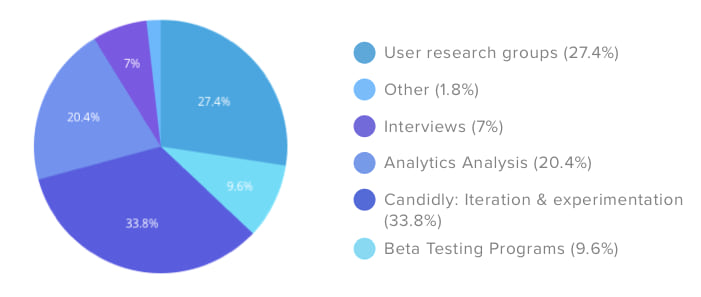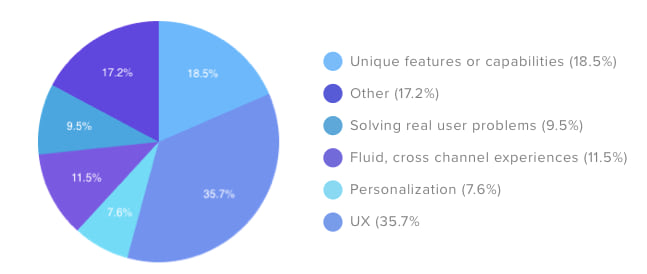The State of Product Management: Creating Magical Moments with Customer Feedback

This blog post features highlights from our State of Product Management report. You can read the entire report for free here.
Taplytics surveyed 160 Product Managers on how they think about creating incredible customer experiences. We asked them about what role customer feedback, in any of its forms, plays in the development and growth of their products.
In summary…Product Managers love customer feedback. No, they need it, since they’re responsible for boosting metrics like retention, conversion and engagements.
For most PMs, this means going beyond surface-level analytics. Simply put by one of our survey respondents:
“Analytics tell us that something’s going on. Customer feedback tells us how to improve it.”
In this blog, we’re sharing the tactics and strategies customer-focused PMs use to create stellar experiences that turn users into loyal brand fanatics.
How do Product Managers collect feedback?

When in the development process do they collect feedback?

Sometimes, we can get caught up with the obsession of operating fast and efficient, and sometimes cut customer feedback collection out or down in the interest of saving time.
However, getting the straight answer at the beginning of the process will help cut down the time needed later for edits.
“Product Managers need to widen their empathy with customers and move beyond the ideas of existing solutions. This requires the consideration of user needs at the earliest possible stage of a product’s development, before fixed ideas for solutions to the product’s design problems have been established – When you skip this step, you sacrifice quality for speed. This will soon require a v3 of the design system you have just put in place. In the end this you will have wasted more time and money focusing on being fast! and agile! than you would have if you put proper user research methods in place from day 1 of development.” -Chelsea Oswald, Shoelace
How do Product Managers prioritize feature requests?
“While it can be tempting to listen to the HiPPO (highest paid person’s opinion) in the room or even delivering the easiest-to- build feature, if your customer isn’t deriving value from it, the end result will not be optimal and your customers will let you know with their wallets. Great product experiences are built with a combination of inputs – data, gut, feedback from other stakeholders, but the most important one will always be your end customer.” – Nikki Hau, Roadmunk
What makes the best products the best?
“If you find customers are having pain points, as a PM, it should be the first thing you address. If customers are requesting features or uninstalling your product, you should be looking for where their workflow breaks and what the underlying reason is behind their requests and frustrations. If customers’ opinions and feedback are not involved in the development process, we risk building with strong biases and hard to understand UX. After all, the UX will always be intuitive to the person building it.” -Nicole Zhao, Vidyard
For more insights, access the full report here.
It dives into:
- The top tools PMs are using today to collect feedback
- Quotes from 14 PMs on how to implement feedback
- The role of empathy in building great products


